Karolina Hird
Ukrainian forces continued counteroffensive operations in Donetsk and Zaporizhia oblasts on September 11 and have reportedly advanced near Bakhmut and in western Zaporizhia Oblast. Ukrainian military officials announced on September 11 that Ukrainian forces have liberated 2 square kilometers of territory in the Bakhmut direction over the past week and have made gains near Klishchiivka (6km southwest of Bakhmut) and Andriiivka (9km southwest of Bakhmut).[1] Ukrainian Deputy Defense Minister Hanna Malyar also stated that Ukrainian forces have gained a total of 4.8 square kilometers in the Tavriisk (Zaporizhia) operational direction over the past week, particularly south of Robotyne (10km south of Orikhiv) and west of Verbove (20km southeast of Orikhiv).[2]
The Rosgvardia may be recruiting previously imprisoned former Wagner Group fighters, likely to further subsume Wagner remnants while bolstering Russia’s domestic security apparatus. Russian opposition outlet iStories reported on September 11 that relatives of previously imprisoned former Wagner fighters revealed that some of their relatives received invitations to serve in the Rosgvardia following a series of tests and certifications.[3] iStories noted that the Rosgvardia is asking former Wagner fighters to pass a security check and provide documentation of official pardons of their prison sentences, as well as documentation of the conclusion of their contracts with Wagner. iStories also amplified the claims of a Rosgvardia servicemember from the 2nd Battalion of an unidentified Moscow-based Rosgvardia unit that ex-Wagner fighters are serving in his unit, including those without any conventional military experience. Another Rosgvardia servicemember from Rostov-on-Don alleged that his unit has sent ex-Wagner fighters to guard “strategic objects” in occupied Ukraine. The Rosgvardia’s possible active recruitment of former Wagner fighters is noteworthy in the wake of recent efforts by the Russian leadership to strengthen the Rosgvardia’s role as a domestic security organ following Wagner’s June 24 armed rebellion.[4] ISW has previously reported on the transfer of “Grom” units (elite anti-drug special units of the Russian Ministry of Internal Affairs) and heavy weaponry to the Rosgvardia following the rebellion.[5] The Rosgvardia may be recruiting former Wagner fighters to maximize its force generation pool, or potentially to exert more direct control over former Wagner elements in the hopes of consolidating domestic security following the rebellion.
Russian border guards expressed similar grievances about limited capabilities and equipment to those voiced by Russian troops serving in Ukraine and continued to express concern over potential Ukrainian raids into Russia. A Russian milblogger who serves on the Kremlin’s human rights council amplified complaints that the Russian had authorities poorly equip border guard units and failed to supply them with sufficient digital communications systems, reconnaissance and strike drones, mobile transport, and medical supplies.[6] The milblogger noted that these grievances come from almost all border service departments within the Russian Federal Security Service (FSB).[7] The milblogger noted that border service units formed task forces to participate in the Soviet war in Afghanistan and were equipped with artillery, aviation, and armored vehicles, implying modern FSB border guard units need similar capabilities.[8] The milblogger claimed that border guard units only receive anti-tank missiles and mortars from personal connections with Russian military units, and advocated for Russian authorities to provide better equipment — including self-propelled artillery systems and electronic warfare systems — to current border guards, especially those in Bryansk, Kursk, and Belgorod oblasts, which border Ukraine.[9] The milblogger’s reference to the Soviet border guards’ participation in the war in Afghanistan and call for the provision of more complex systems suggest that Russian border guards continue to be concerned about the threat of possible Ukrainian cross-border raids into Russia and Ukrainian drone attacks on Russian territory.
Russian forces conducted a series of Shahed-131/136 drone strikes targeting southern Ukraine on the night of September 10 to 11. The Ukrainian General Staff reported that Ukrainian forces shot down 12 Shaheds over Zaporizhia, Dnipropetrovsk, and Mykolaiv oblasts and another unspecified drone.[10] Ukrainian Main Military Intelligence Directorate (GUR) Head Kyrylo Budanov stated on September 11 that Russian forces are changing tactics and using drones “en masse.”[11] The Ukrainian General Staff also reported that Russian forces launched 10 missiles, including Kh-31P anti-radar missiles and Ka-59 guided cruise missiles, at Dnipropetrovsk Oblast.[12]
The Kremlin’s ruling United Russia party unsurprisingly achieved most of its desired results in highly fraudulent local elections in Russia and occupied Ukraine. The Russian Central Election Commission (CEC) claimed that United Russia won gubernatorial elections in 13 regions and is leading in six regions where votes are still being counted.[13] United Russia gubernatorial candidates won over 72 percent of the vote in 13 out of 20 regions in Central Russia, the Russian Far East, and Siberia.[14] All three of the candidates that Russian President Vladimir Putin publicly endorsed — Nizhny Novgorod Governor Gleb Nitkin, Moscow Mayor Sergei Sobyanin, and Smolensk Governor Vasily Anokhin — won or are leading by major margins.[15] United Russia reportedly received 83 percent of the vote in occupied Zaporizhia Oblast in Ukraine, 78 percent in Donetsk Oblast, 74 percent in Luhansk Oblast, and 74.8 percent in Kherson Oblast.[16] Non-United Russia gubernatorial candidates won in only two regions, Khakassia and Oryol oblasts, where Communist Party incumbents were re-elected.[17] ISW has previously reported on the Kremlin’s extensive preparations to intimidate voters and directly falsify results to ensure a United Russia victory throughout Russia and in highly fraudulent “elections” in occupied Ukraine.[18]
North Korean leader Kim Jong Un and Russian President Vladimir Putin will meet in Vladivostok in the coming days, likely to discuss bilateral relations and North Korea’s supplies of artillery munitions to Russia.[19] The Kremlin announced on September 11 that Kim will meet with Putin in the coming days, and Kim has reportedly left Pyongyang and is traveling to Russia.[20] ISW will continue to follow developments in the lead-up to the meeting.
US and Armenian forces began joint military exercises in Armenia on September 11. The Armenian Ministry of Defense stated that the joint US-Armenian “Eagle Partner 2023” exercises will prepare Armenian forces to take part in international peacekeeping missions and will last until September 20.[21] 85 US personnel and 175 Armenian personnel are participating in exercises at the Zar and Armavir training grounds near Yerevan.[22] “Eagle Partner 2023” will occur against the backdrop of increasingly tense relations between Moscow and Yerevan, as well as heightened tensions between Armenian and Azerbaijani forces in Nagorno-Karabakh.[23]
Key Takeaways:
- Ukrainian forces continued counteroffensive operations in Donetsk and Zaporizhia oblasts on September 11 and have reportedly advanced near Bakhmut and in western Zaporizhia Oblast.
- The Rosgvardia may be recruiting previously imprisoned former Wagner Group fighters, likely to further subsume Wagner remnants while bolstering Russia’s domestic security apparatus.
- Russian border guards expressed similar grievances about limited capabilities and equipment to those voiced by Russian troops serving in Ukraine and continued to express concern over potential Ukrainian raids into Russia.
- The Kremlin’s ruling United Russia party unsurprisingly achieved most of its desired results in highly fraudulent local elections in Russia and occupied Ukraine.
- North Korean leader Kim Jong Un and Russian President Vladimir Putin will meet in Vladivostok in the coming days, likely to discuss bilateral relations and North Korea’s supplies of artillery munitions to Russia.
- US and Armenian forces began joint military exercises in Armenia on September 11.
- Russian forces conducted offensive operations along the Kupyansk-Svatove-Kreminna line, near Bakhmut, along the Avdiivka-Donetsk City line, in the western Donetsk-eastern Zaporizhia Oblast border area, and in western Zaporizhia Oblast and advanced in some areas on September 11.
- Ukrainian forces conducted offensive operations in at least one sector of the front on September 11 and advanced near Bakhmut, along the Avdiivka-Donetsk City line, in the western Donetsk-eastern Zaporizhia Oblast border area, and in western Zaporizhia Oblast.
- Russian Central Election Committee Head Alexander Sidyakin unsurprisingly claimed that United Russia received the majority of votes in occupied Luhansk, Donetsk, Zaporizhia, and Kherson oblasts.
- Ukrainian and United Kingdom military officials reported on September 11 that the Russian military intends to mobilize over 400,000 personnel by the end of 2023.
We do not report in detail on Russian war crimes because these activities are well-covered in Western media and do not directly affect the military operations we are assessing and forecasting. We will continue to evaluate and report on the effects of these criminal activities on the Ukrainian military and the Ukrainian population and specifically on combat in Ukrainian urban areas. We utterly condemn these Russian violations of the laws of armed conflict, Geneva Conventions, and humanity even though we do not describe them in these reports
- Russian Main Effort – Eastern Ukraine (comprised of two subordinate main efforts)
- Russian Subordinate Main Effort #1 – Capture the remainder of Luhansk Oblast and push westward into eastern Kharkiv Oblast and encircle northern Donetsk Oblast
- Russian Subordinate Main Effort #2 – Capture the entirety of Donetsk Oblast
- Russian Supporting Effort – Southern Axis
- Russian Mobilization and Force Generation Efforts
- Activities in Russian-occupied areas
Russian Subordinate Main Effort #1 – Luhansk Oblast (Russian objective: Capture the remainder of Luhansk Oblast and push westward into eastern Kharkiv Oblast and northern Donetsk Oblast)
Russian forces continued offensive operations along the Kupyansk-Svatove-Kreminna line on September 11 and advanced in the Kupyansk direction. Geolocated footage posted on September 11 shows that Russian forces have made gains near the forest belt northeast of Synkivka (10km northeast of Kupyansk).[24] Ukrainian Deputy Defense Minister Hanna Malyar reported ongoing heavy fighting in the Kupyansk direction and that Ukrainian forces are repelling Russian attacks near Synkivka.[25] Malyar also stated that Russian forces conducted unsuccessful offensive operations along the Svatove-Kreminna line near Berestove (20km northwest of Svatove), Novoselivske (14km northwest of Svatove), and Novoyehorivka (15km southwest of Svatove).[26] A Russian source claimed that Russian forces have advanced up to half a kilometer near Novoyehorivka.[27] A Russian milblogger posted combat footage of the 488th Motorized Rifle Regiment (144th Motorized Rifle Division, 20th Combined Arms Army, Western Military District) fighting near Kreminna.[28] Ukrainian Eastern Group of Forces Spokesperson Ilya Yevlash noted that Russian forces are conducting intense artillery fire along this line.[29]
Russian sources claimed that Ukrainian forces conducted unsuccessful ground attacks near Kreminna on September 11. The Russian Ministry of Defense (MoD) claimed that Russian forces repelled three Ukrainian assault groups west of Dibrova (5km southwest of Kreminna).[30] Several Russian milbloggers claimed that Ukrainian forces are focusing on attacks in the Serebryanske forest area near Torske (15km west of Kreminna).[31]
Russian Subordinate Main Effort #2 – Donetsk Oblast (Russian objective: Capture the entirety of Donetsk Oblast, the claimed territory of Russia’s proxies in Donbas)
Ukrainian forces conducted offensive operations near Bakhmut and reportedly advanced on September 11. The Ukrainian General Staff and Ukrainian Deputy Defense Minister Hanna Malyar reported that Ukrainian forces advanced near Klishchiivka (7km southwest of Bakhmut) and Andriivka (9km southwest of Bakhmut).[32] A Russian milblogger also claimed that Ukrainian forces advanced into Andriivka.[33] Ukrainian Eastern Group of Forces Spokesperson Ilya Yevlash stated that Ukrainian forces are achieving unspecified success near Klishchiivka, Predtechyne (16km southwest of Bakhmut), Andriivka, Kurdyumivka (13km southwest of Bakhmut), and Dachne (19km southwest of Bakhmut).[34] The Russian MoD claimed that elements of the Russian Southern Grouping of Forces repelled Ukrainian attacks near Kurdyumivka.[35] Another Russian milblogger claimed that Ukrainian forces continue to counterattack in the Klishchiivka-Andrivka-Kurdyumivka area but have not advanced in this area.[36] The milblogger claimed that Russian forces still control Andriivka and Kurdyumivka.[37] Malyar stated that Ukrainian forces have liberated two square kilometers in the Bakhmut direction over the past week.[38]
Russian forces continued ground attacks near Bakhmut but did not make any confirmed advances on September 11. The Ukrainian General Staff and Malyar reported that Russian forces conducted unsuccessful attacks near Zaliznyanske (13km north of Bakhmut), Orikhovo-Vasylivka (11km northwest of Bakhmut), Bohdanivka (5km northwest of Bakhmut), Klishchiivka, and Kurdyumivka.[39] A Russian milblogger claimed that Russian forces conducted assaults near Orikhovo-Vasylivka, Berkhivka (6km north of Bakhmut), and Klishchiivka but did not specify an outcome.[40] A Russian news aggregator claimed on September 10 that Russian forces conducted assaults near Dubovo-Vasylivka (6km northwest of Bakhmut) and Andriivka.[41] Another Russian milblogger claimed on September 11 that Russian forces rotated units of the Russian 106th Airborne (VDV) Assault Brigade on Bakhmut’s northern flank, likely referring to a tactical rotation-in-place by elements of the 106th Brigade, as Russian forces have done in western Zaporizhia Oblast.[42] Chechen Republic Head Ramzan Kadyrov claimed that Chechen “Akhmat” Spetsnaz forces alongside the Luhansk People’s Republic (LNR) 2nd Army Corps and Russian 346th Spetsnaz Brigade (Russian General Staff Main Directorate [GRU]) are operating on the western outskirts of Klishchiivka.[43] A Russian milblogger also amplified footage claiming to show elements of the “Yenisei” detachment of the “Sibir” Cossack Brigade of the Volunteer Assault Corps operating near Bakhmut.[44]
Ukrainian forces conducted offensive operations along the Avdiivka-Donetsk City line and reportedly advanced on September 11. Malyar stated that Ukrainian forces control part of Opytne (3km southwest of Avdiivka) but noted that the situation is fluid and fighting continues.[45] One Russian milblogger claimed that Ukrainian forces advanced near Opytne and in the direction of Spartak (4km south of Avdiivka).[46] Another Russian milblogger claimed that Russian forces lack manpower, competent commanders, quality assault tactics, and counterbattery capabilities in this area of the front.[47] Other Russian sources claimed that Ukrainian forces advanced to the outskirts of Opytne but Russian forces immediately pushed them back and retained full control of the settlement, however.[48] The Russian MoD claimed on September 11 that elements of the Russian Southern Grouping of Forces repelled Ukrainian attacks near Avdiivka and Krasnohorivka (directly west of Donetsk City).[49]
Russian forces conducted ground attacks along the Avdiivka-Donetsk City line on September 11 but did not make any claimed or confirmed advances. The Ukrainian General Staff and Malyar reported that Russian forces conducted unsuccessful offensive operations near Keramik (14km northwest of Avdiivka), Avdiivka, Sieverne (6km west of Avdiivka), Marinka (on the southwestern outskirts of Donetsk City), and Novomykhailivka (10km southwest of Donetsk City).[50] A Russian milblogger claimed that Russian forces unsuccessfully attacked in Marinka.[51] A Russian news aggregator claimed on September 10 that Russian forces attacked the southern outskirts of Avdiivka, near Krasnohorivka, and on the western outskirts of Marinka.[52]
Russian Supporting Effort – Southern Axis (Russian objective: Maintain frontline positions and secure rear areas against Ukrainian strikes)
Ukrainian forces conducted offensive operations in the western Donetsk-eastern Zaporizhia Oblast border area and reportedly advanced on September 11. Ukrainian Deputy Defense Minister Hanna Malyar stated that Ukrainian forces have achieved unspecified successes near Novomayorske (18km southeast of Velyka Novosilka).[53] Russian sources, including the Russian Ministry of Defense (MoD), claimed on September 10 and 11 that Ukrainian forces unsuccessfully attacked northwest of Novomayorske, near Novodonetske (12km southeast of Velyka Novosilka), and north of Pryyutne (16km southwest of Velyka Novosilka).[54]
Russian sources claimed that Russian forces conducted offensive operations in the western Donetsk-eastern Zaporizhia Oblast border area on September 11 and reportedly advanced. A Russian milblogger claimed on September 10 that Russian forces recaptured lost positions north of Pryyutne near the Hrusheva Gully.[55] A Russian media aggregator claimed on September 10 that Russian forces counterattacked near Novomayorske.[56] A Russian milblogger claimed that elements of the Russian 40th Naval Infantry Brigade (Pacific Fleet) are operating near Novomayorske.[57]
Ukrainian forces conducted offensive operations in western Zaporizhia Oblast on September 11 and reportedly advanced. Malyar stated that Ukrainian forces have advanced 4.8 square kilometers in the past week in the Tavriisk (Zaporizhia) direction and that Ukrainian forces achieved unspecified successes south of Robotyne (10km south of Orikhiv) and west of Verbove (18km southeast of Orikhiv).[58] Russian sources, including the Russian MoD, claimed that Ukrainian forces unsuccessfully attacked near Robotyne and in the forested area east of the settlement.[59] A Russian milblogger claimed that Ukrainian forces unsuccessfully attacked along the Robotyne-Verbove line.[60] A Russian news aggregator claimed on September 10 that Ukrainian forces attempted to advance towards Novoprokopivka (13km south of Orikhiv).[61]
Russian forces conducted offensive operations in western Zaporizhia Oblast and reportedly advanced on September 11. The Ukrainian General Staff reported that Russian forces unsuccessfully attacked near Novodanylivka (6km south of Orikhiv) and Robotyne.[62] Russian sources claimed that Russian forces successfully counterattacked near Novofedorivka (21km southeast of Orikhiv).[63] Russian sources also claimed on September 10 and 11 that Russian forces regained lost positions east of Robotyne and near Verbove.[64]
The Ukrainian Main Military Intelligence Directorate (GUR) stated on September 11 that GUR units restored Ukrainian control over the Boyko Towers gas production drilling platforms off the coast of Crimea in the Black Sea on an unspecified date.[65] Russian forces controlled the drilling platforms since 2015.[66]
Russian Mobilization and Force Generation Efforts (Russian objective: Expand combat power without conducting general mobilization)
Ukrainian and United Kingdom military officials reported on September 11 that the Russian military intends to mobilize over 400,000 personnel by the end of 2023. The United Kingdom Ministry of Defense (UK MoD) reported that the Russian military intends to recruit 420,000 contract personnel by the end of 2023.[67] ISW has previously assessed that this number likely includes many volunteers who are already fighting in Ukraine, and who were forced to sign contracts with the Russian MoD by July 1, 2023.[68] The Ukrainian General Staff reported that the Russian military will conduct mass forced mobilization of about 400,000 to 700,000 people in Russia and occupied Ukraine in the “near future.”[69] It is unclear if these figures include personnel already serving in volunteer and irregular formations in Ukraine, and it is unlikely that these numbers refer to total combat power. The Ukrainian General Staff also reported that Russian authorities plan to call up about 40,000 Chechen residents to serve in “blocking units,” likely referencing Chechen units that served as “barrier forces” policing Russian military deserters in occupied Kherson Oblast.[70]
Israeli National Intelligence Agency (Mossad) Director David Barnea stated on September 10 that Iran previously intended to provide Russia with short- and long-range missiles, but that unspecified actors “foiled these plans.”[71]
Activities in Russian-occupied areas (Russian objective: Consolidate administrative control of annexed areas; forcibly integrate Ukrainian citizens into Russian sociocultural, economic, military, and governance systems)
Russian Central Election Committee (CEC) Head Alexander Sidyakin unsurprisingly claimed that United Russia received the majority of votes in occupied Luhansk, Donetsk, Zaporizhia, and Kherson oblasts.[72] Sidyakin also claimed that voter turnout ranged from 74.4 percent to over 80 percent in these occupied areas. ISW has previously reported that Russian occupation authorities likely attempted to inflate voter turnout numbers prior to the election through coercive measures and conducting door-to-door voting.[73] The supposedly high rate of voter turnout in occupied Ukraine is also likely a reflection of recent massive demographic changes as a result of Russia’s occupation of Ukraine. Russian independent outlet Mozhem Obyasnit (We Can Explain) reported that occupied almost 10 percent of Zaporizhia Oblast’s adult population left during Russia’s occupation.[74] This figure likely comprises both segments of the population that were able to leave freely and those that Russian authorities have forcibly removed to other occupied areas of Ukraine or deported to the Russian Federation.
UN Special Rapporteur Alice Jill Edwards reported that Russian authorities likely torture Ukrainian civilians and prisoners of war (POWs) as part of a “state policy.”[75] Edwards reported on September 10 that Russian authorities likely continue to torture Ukrainian civilians and POWs and that acts of torture seem “orchestrated as part of a State policy to intimidate, instill fear, punish, or extract information and confessions.”[76] Edwards also stated that these acts of torture and violent punishment would violate international human rights and humanitarian law.[77]
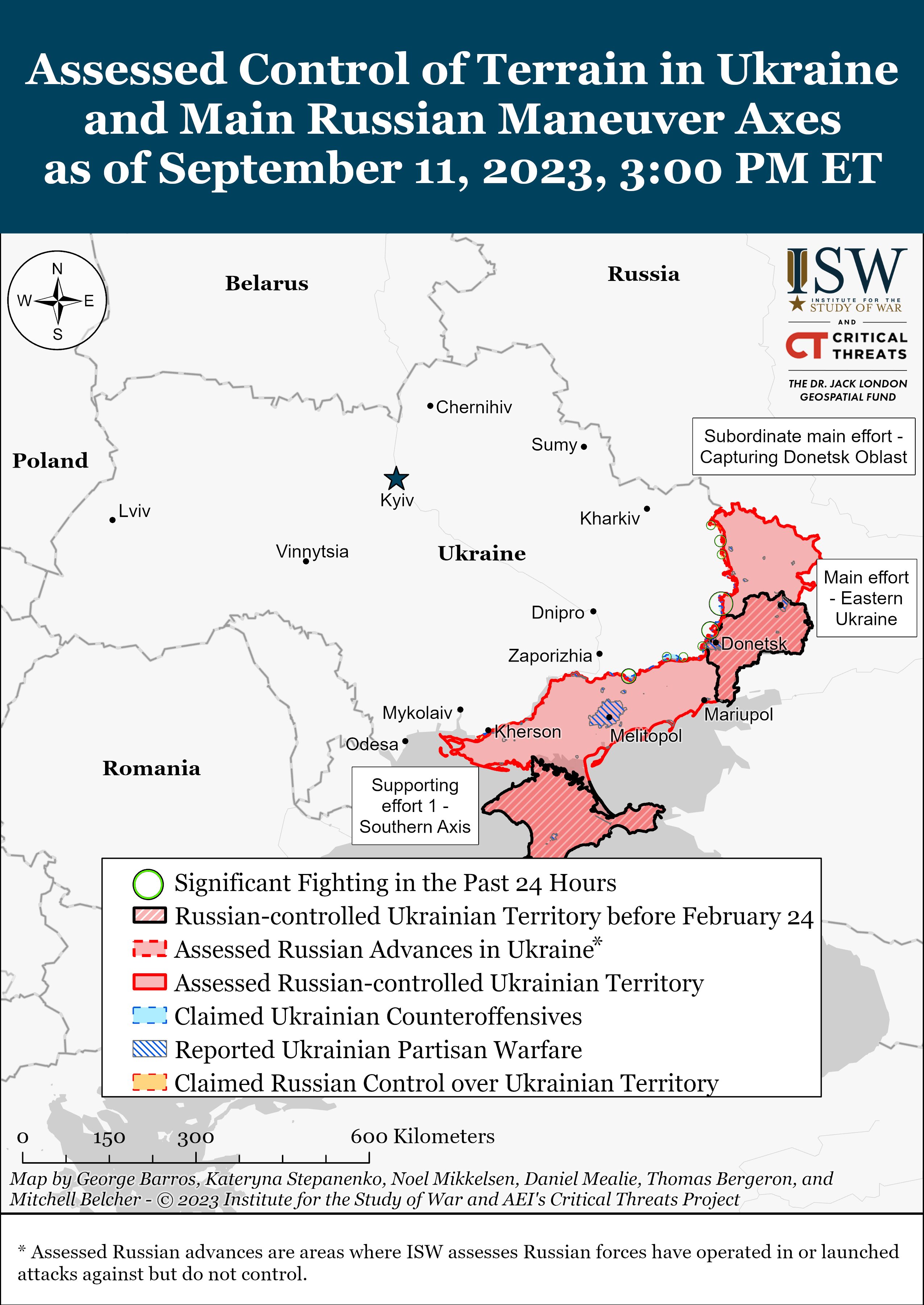
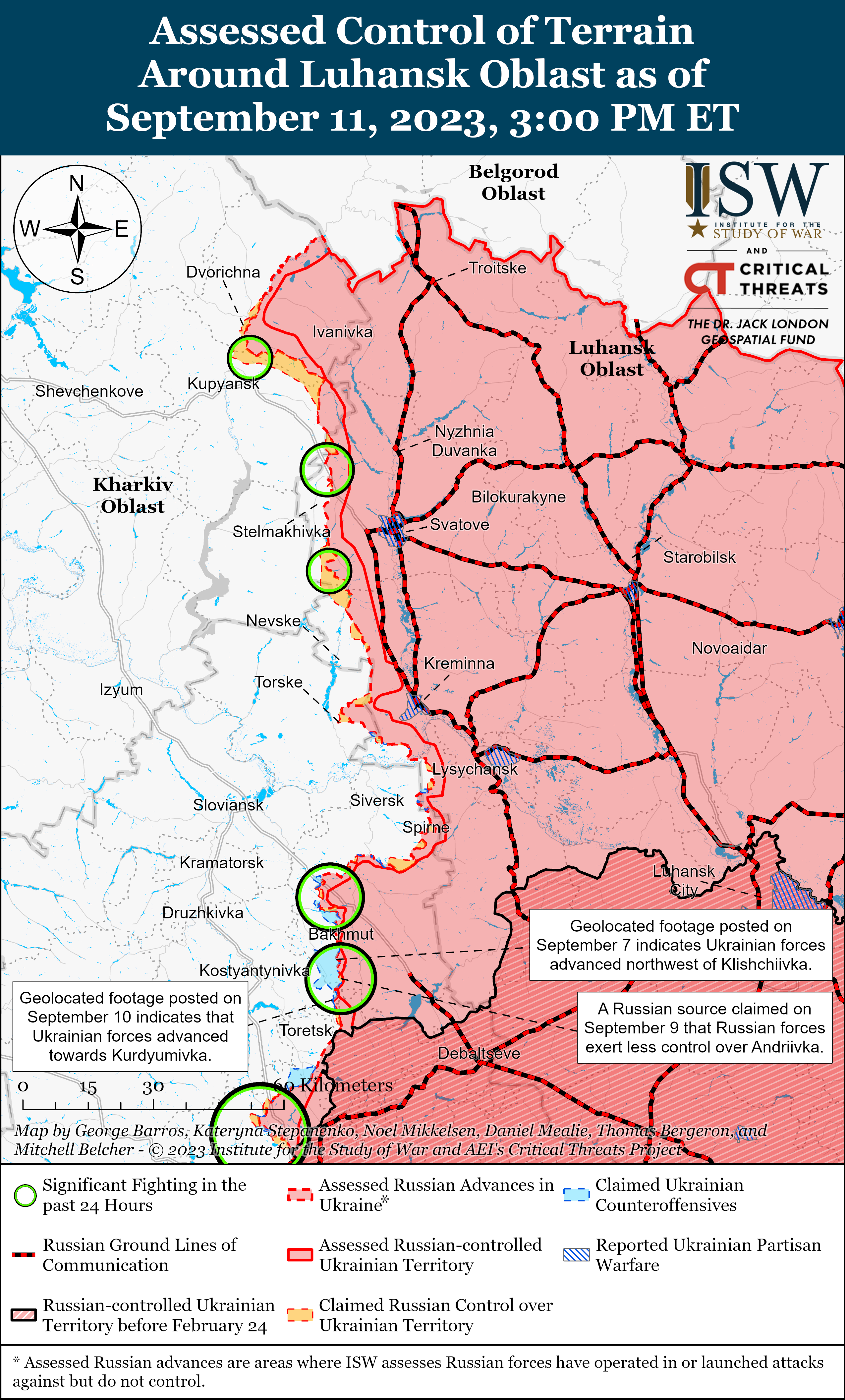
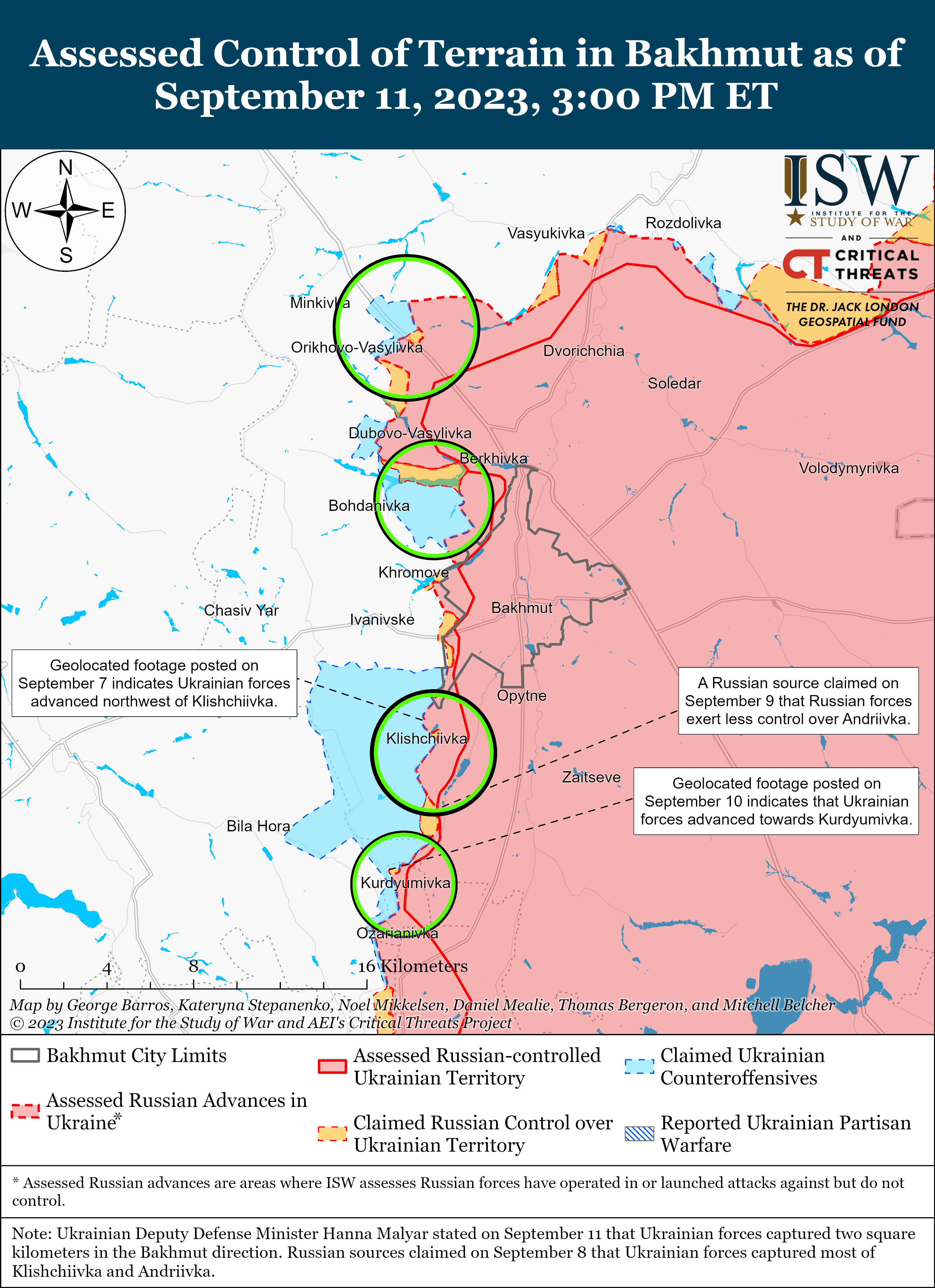
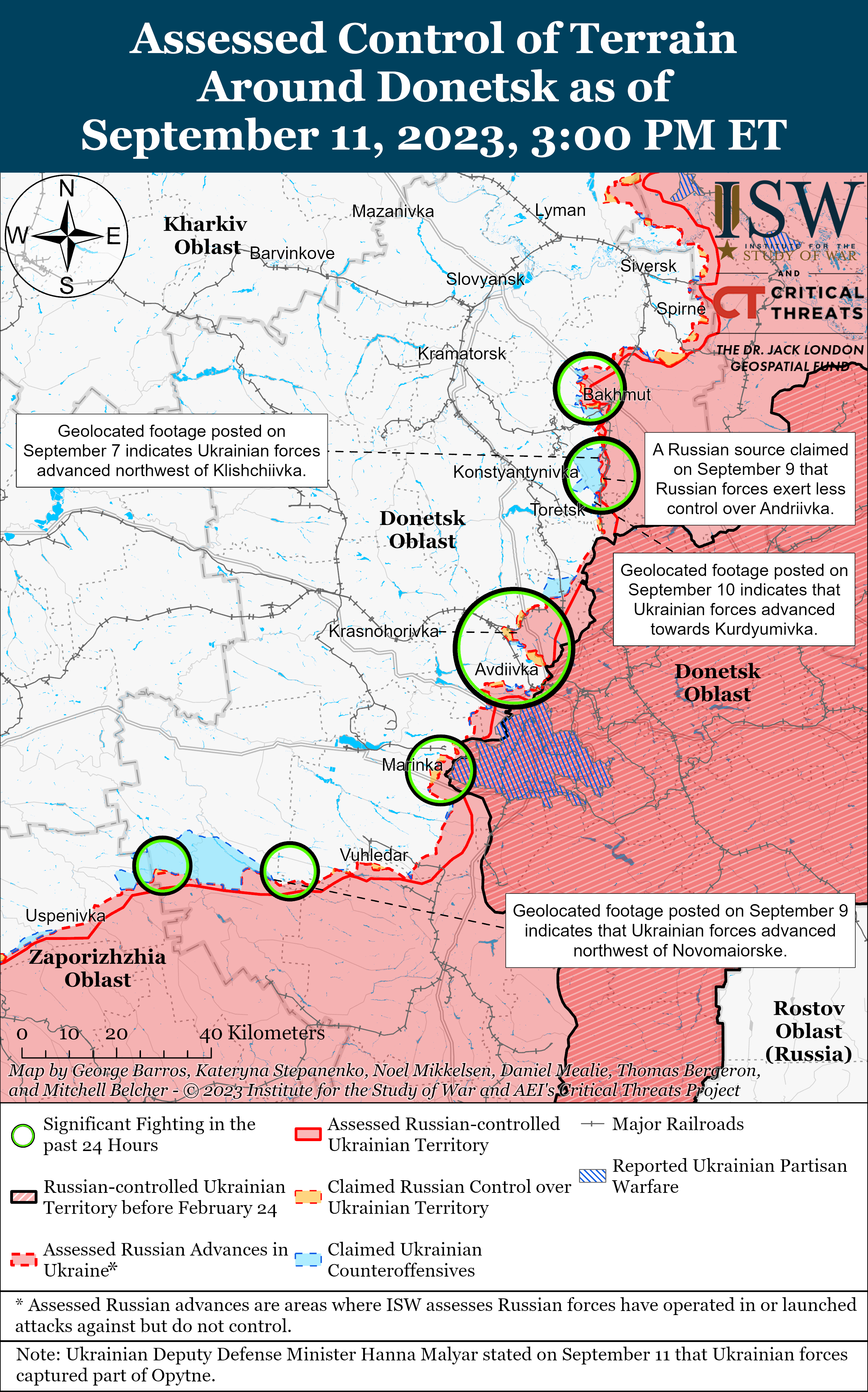
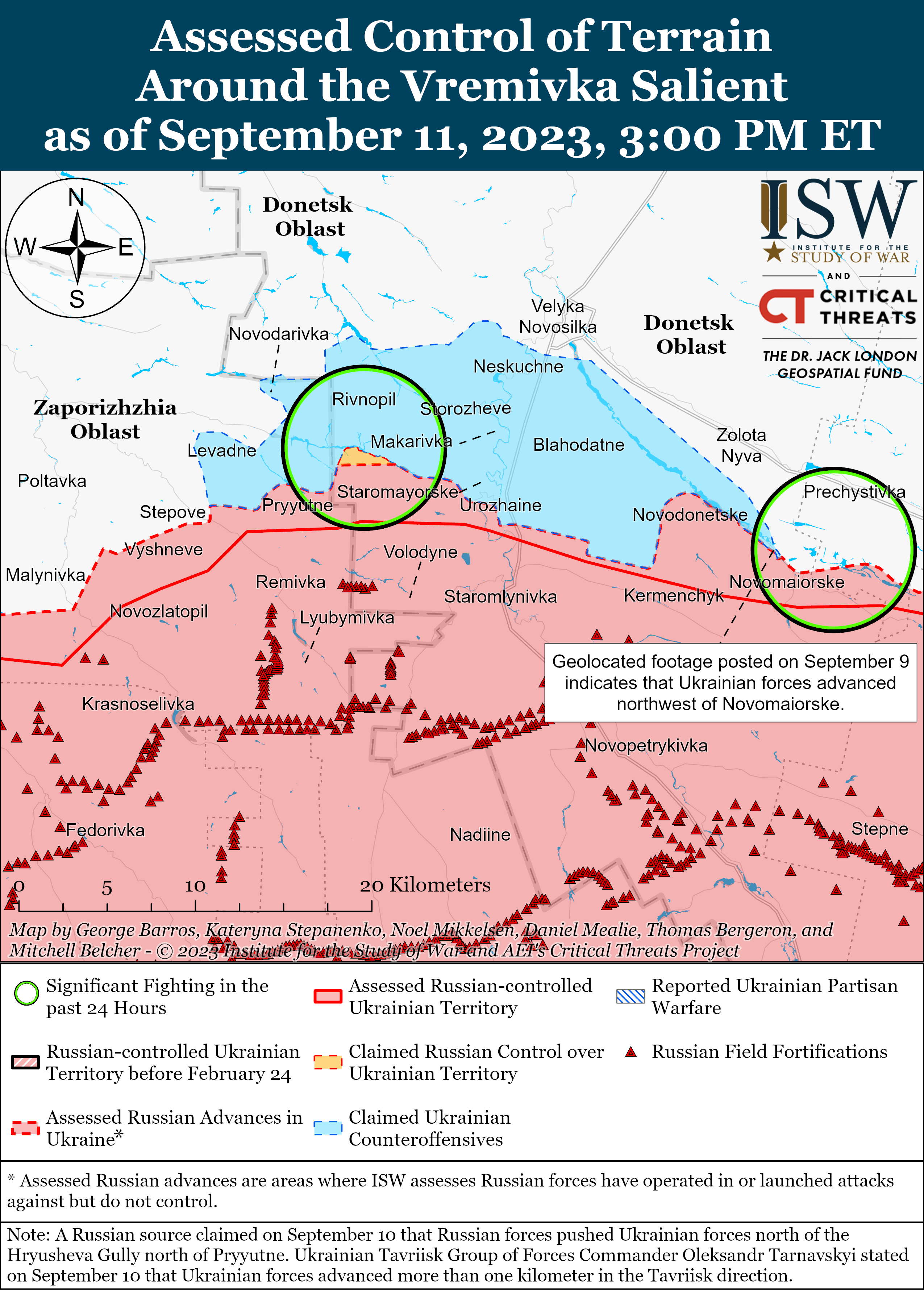
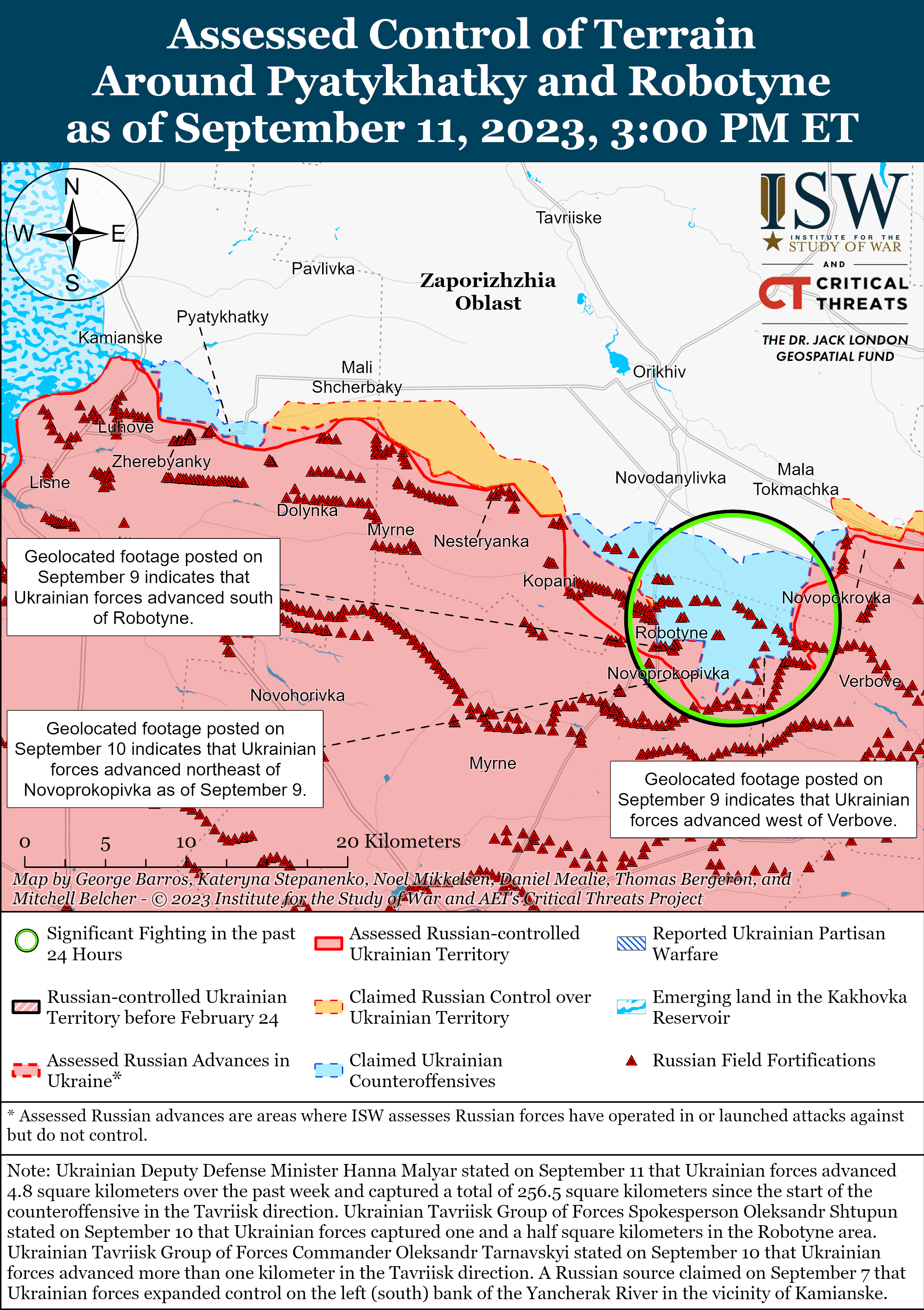
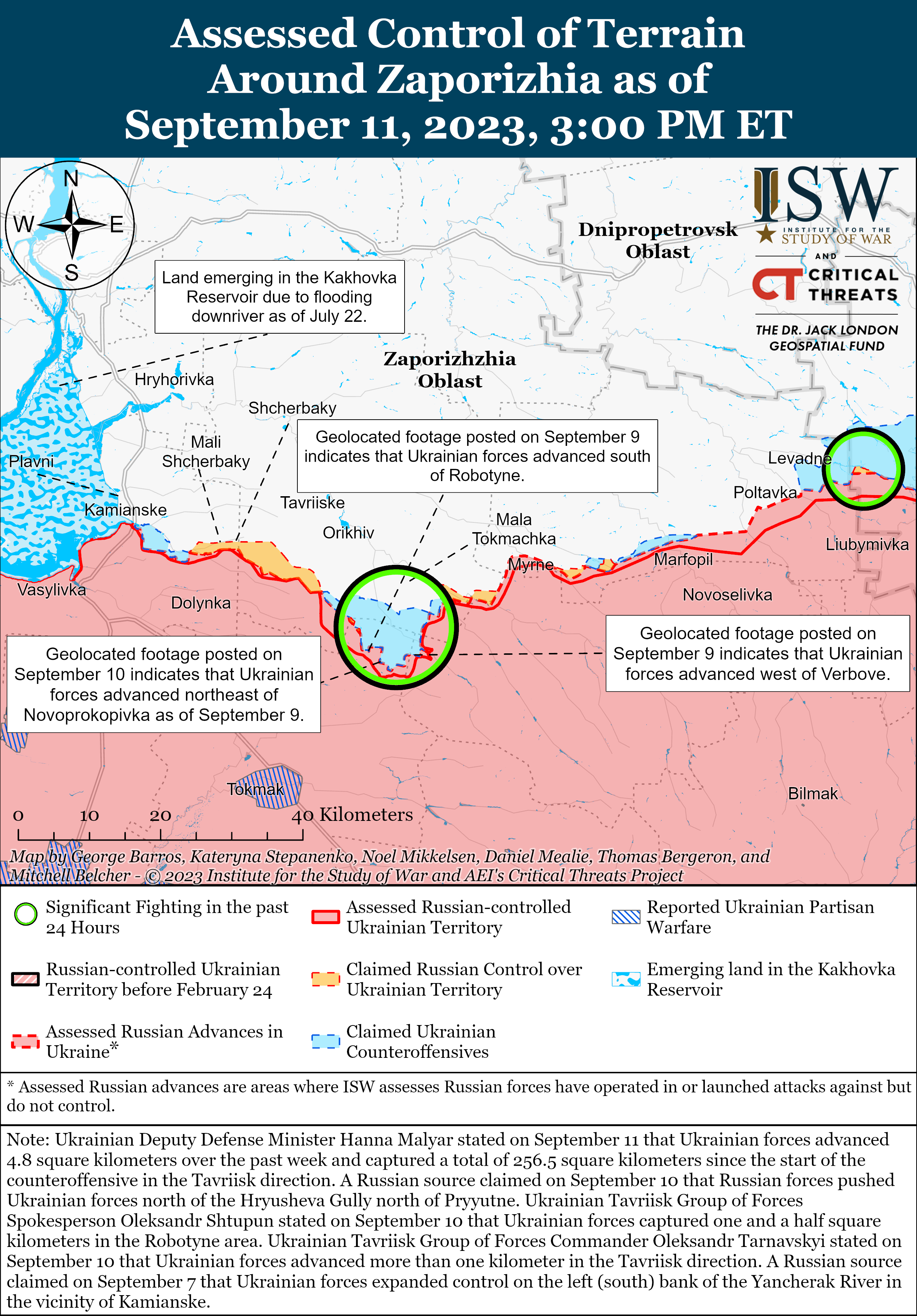
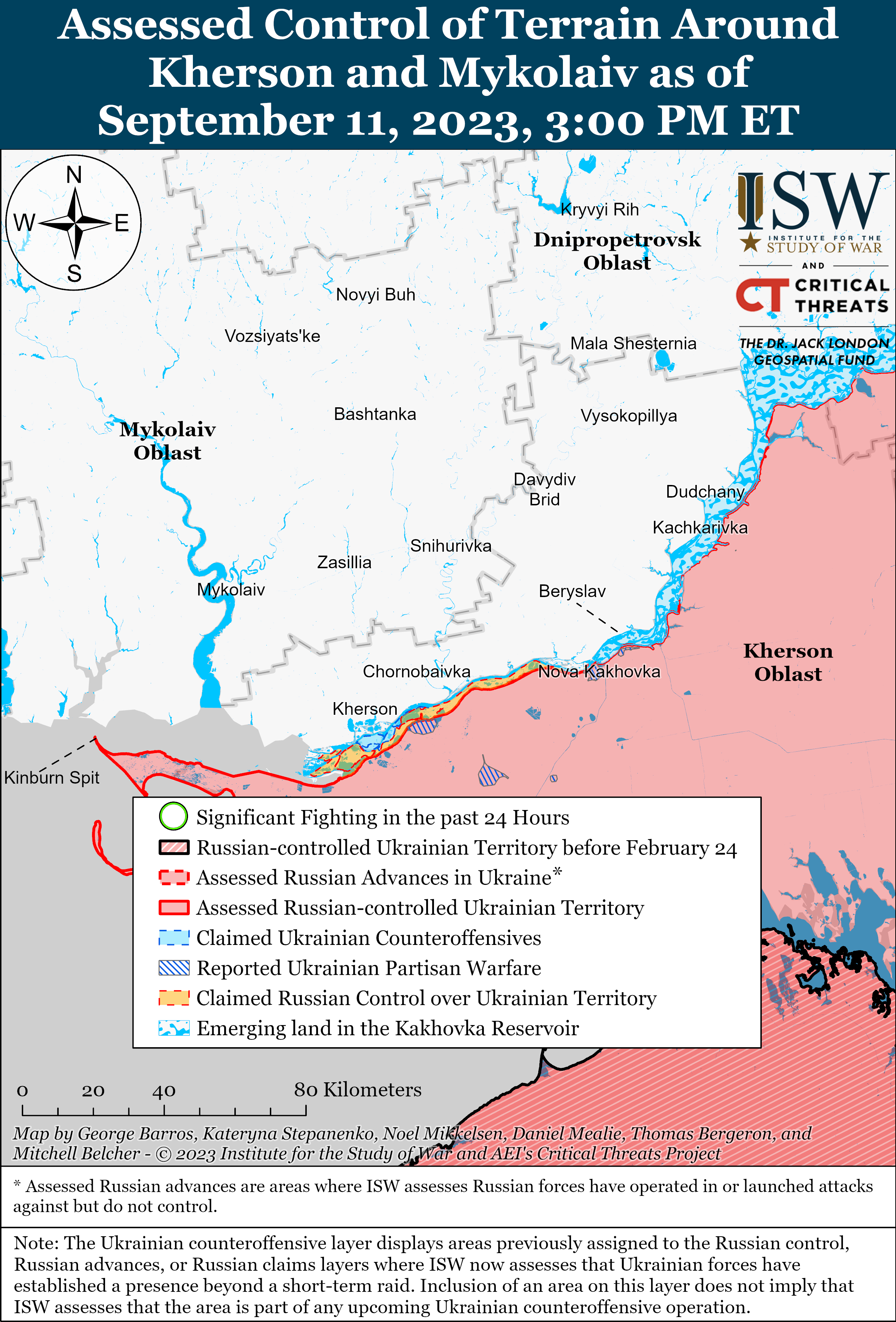
No comments:
Post a Comment